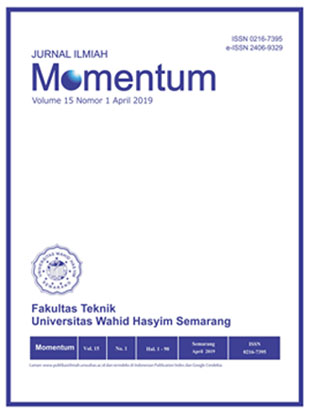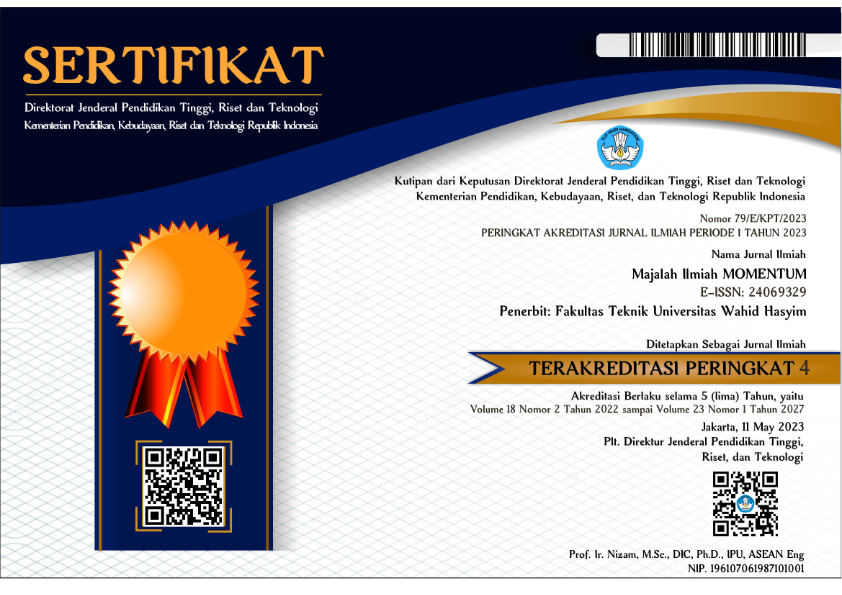ANALISA PENGERASAN PERMUKAAN BUSHING S45C DENGAN METODE QUENCHING MEDIA CELUP OLI MENGUNAKAN MESIN INDUKSI DAN TEMPERING MESIN FURNACE
DOI:
https://doi.org/10.36499/jim.v15i1.2657Abstract
Pengerasan permukaan dapat dilakukan dengan metode quenching menggunakan mesin induksi. Tujuan penelitian ini adalah untuk menganalisa kekerasan dan setruktur mikro baja S45C sebagai pengganti bushing bulldozer. Baja S45C dipanaskan dengan menggunakan mesin induksi pada temperatur 800, 850, 900  dengan variasi koil 2 dan 3 lilitan, serta dicelup dengan media oli dan dilakukan tempering pada suhu 300  selama 2 menit menggunakan mesin furnace. Hasil pengujian raw material memperlihatkan nilai kekerasn rata-rata 12 HRC dengan setruktur mikro ferit dan perlit. Setalah dilakukan qunching menggunakan mesin induksi dengan koil 2 lilitan dan 3 lilitan kekerasannya naik secara signifikan menjadi 54HRC dengan fasa setruktur mikro ferit dan matrensit. Setelah dilakukan tempering menggunakan mesin furnace kekeranya menurun 4-5 HRC dengan fasa setruktur mikro ferit dan matrensi temper.
Kata kunci: pengerasan permukaan, kekerasan, struktur mikro
Downloads
Published
Issue
Section
License
Authors who publish with this journal agree to the following terms:
The journal allow the authors to hold the copyright without restrictions and allow the authors to retain publishing rights without restrictions.
Authors retain copyright and grant the journal right of first publication with the work simultaneously licensed under a Creative Commons Attribution License that allows others to share the work with an acknowledgement of the work's authorship and initial publication in this journal.
Authors are able to enter into separate, additional contractual arrangements for the non-exclusive distribution of the journal's published version of the work (e.g., post it to an institutional repository or publish it in a book), with an acknowledgement of its initial publication in this journal.
Authors are permitted and encouraged to post their work online (e.g., in institutional repositories or on their website) prior to and during the submission process, as it can lead to productive exchanges, as well as earlier and greater citation of published work (See The Effect of Open Access).

This work is licensed under a Creative Commons Attribution 4.0 International License.








